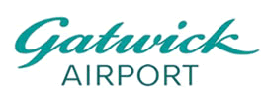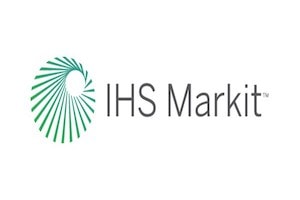You Ask, We Answer: A Comprehensive Review of the GitLab DevSecOps Platform
Here at Sirius, we often get asked, "What is the ultimate verdict on GitLab? Is the single integrated DevSecOps solution truly efficient, or does its architectural complexity mask operational risks and hidden costs?". This is a very good question, and one that deserves a clear, honest answer. We understand the need to know the true strategic advantages and the potential operational overhead before choosing a platform that dictates your development lifecycle for years.
We want to be upfront: GitLab is a comprehensive DevSecOps solution consistently recognized as a Leader in the Gartner Magic Quadrant for DevOps Platforms. However, relying on this integrated promise without understanding the underlying technical bottlenecks and the catastrophic transfer of security liability in self-managed instances can expose your organization to significant financial and operational risk. This article will honestly review GitLab's architectural strengths, its proven market value, and the critical trade-offs involved in selecting a deployment model, helping you decide what is best for your specific needs. We aim to be fiercely transparent.
Strategic Positioning and the Single Application Value
GitLab has solidified its position by moving beyond its roots in source code management to offer end-to-end capabilities across the entire software development lifecycle.
Market Leadership and Validation
GitLab's market standing is validated by consistent industry recognition.
- Gartner Leader: GitLab was named a Leader in the 2025 Gartner Magic Quadrant for DevOps Platforms for the third consecutive year. This reflects the platform's demonstrated Ability to Execute and Completeness of Vision.
- High Performance: In the accompanying 2025 Critical Capabilities report, GitLab ranked first in 4 out of the 6 evaluated use cases. This confirms the platform’s high performance across scenarios like cloud-native delivery and advanced security features.
- Scale: The platform is trusted by more than 50 million registered users, including over 50% of the Fortune 100.
The Single Application Architecture
The core architectural philosophy is the "single application" design, unifying project planning, SCM, CI/CD, security, and monitoring into one cohesive application.
- Simplified Governance: The unification simplifies authentication and authorization management by employing a single set of permissions, which reduces security risk and complexity across the toolchain.
- Reduced Overhead: This model is designed to minimize administrative overhead traditionally required to install, configure, patch, and maintain numerous individual tools.
- Developer Productivity: The consistent user experience reduces cognitive load and context switching. Troubleshooting time is lowered because all necessary data (pipeline status, code changes, test results, issues) are visible directly on the merge request, eliminating the need for manual state passing between disparate tools.
- Rapid Innovation: GitLab emphasizes continuous rapid innovation, shipping new solutions every month for over 150 consecutive months.
Commercial Structure, Governance, and Security Paywalling
GitLab utilizes a user-based subscription model across its Free, Premium, and Ultimate tiers. The commercial strategy is built on charging upfront for comprehensive, integrated DevSecOps capability.
Feature Segmentation and Tier Requirements
The decision to move to the Ultimate tier is primarily driven by mandatory security and compliance requirements.
- Premium ($29/user/month): Provides features essential for team scaling, such as Merge Requests Approval, Code Ownership, and Protected Branches. It includes 10,000 compute minutes per month.
- Ultimate (Contact Sales): Unlocks the full security suite, including Dynamic Application Security Testing (DAST), Fuzz Testing, Software Composition Analysis (SCA), and IaC Scanning.
- Governance Lock-in: Features essential for executive reporting and strategic oversight, such as DORA Metrics, Value Stream Management, and centralized Compliance Dashboards, are restricted exclusively to the Ultimate tier.
- AI Add-ons: Strategic AI features, like Vulnerability Explanation and Vulnerability Resolution, are reserved as paid add-ons that mandate the Ultimate tier subscription. The optional GitLab Duo Pro add-on is priced at an additional $19 per user per month for Premium and Ultimate customers.
Business Model Friction
User satisfaction is sometimes undermined by strategic business choices regarding features and pricing.
- Artificial Paywalling: Essential collaboration features, such as "Multiple assignees for issues," are artificially restricted to higher tiers. This tactic prioritizes revenue maximization over user value.
- Licensing Penalties: Users who only require view and interaction permissions (Reporters) consume a paid seat if they interact with the platform, inflating licensing costs. Additionally, all subscriptions are mandatorily paid in annual payments; monthly options are not offered.
Scalability and Deployment Risks (The Disadvantages)
The decision to adopt a Self-Managed deployment introduces substantial operational complexity and risk, directly contradicting the platform's promise of reduced administrative overhead.
Catastrophic Security Liability
GitLab’s operational model transfers systemic security risk directly to customers who select the Self-Managed deployment.
- Customer Responsibility: GitLab has consistently maintained that customers bear the ultimate responsibility for securing self-managed installations.
- Red Hat Breach: The severe implications of this liability were demonstrated when unauthorized access to a self-managed Red Hat Consulting GitLab instance resulted in the exfiltration of approximately 570GB of highly sensitive data (client infrastructure, authentication tokens, API keys), creating a multi-level supply-chain attack vector.
- HA Limitations: Infrastructure issues arising from complex, multi-data center High Availability (HA) deployments may fall outside the scope of GitLab Support’s assistance.
Technical Bottlenecks and Performance Friction
The platform struggles under the load patterns generated by modern software development practices.
- Gitaly Bottlenecks: The Gitaly service, managing Git repository interactions, is consistently identified as a bottleneck under heavy load, particularly when dealing with large monorepos. Cloning these repositories can be "extremely slow" because the underlying git-pack-objects process consumes substantial CPU and memory.
- Required Workarounds: To sustain functional performance, Platform Engineering teams must implement complex manual workarounds, such as configuring CI/CD settings to use shallow clones or changing the Git strategy from clone to fetch. This demonstrates that core repository handling services lack sufficient out-of-the-box efficiency for massive repository load patterns.
Total Cost of Ownership (TCO) and Mitigations
The TCO analysis reveals that administrative labor is the dominant cost factor for self-managed deployments.
- Labor Asymmetry: For a 500-user Premium organization, the minimum estimated annual TCO for a single-administrator, non-HA self-managed instance is $255,934+, which is over $81,934 higher than the corresponding pure SaaS licensing cost ($174,000). The median annual salary for a dedicated GitLab Administrator is estimated at $77,950.
- SaaS Mandate: Unless strict regulatory or legal mandates prohibit it, organizations might mandate the exclusive use of GitLab.com SaaS. The operational simplicity and financial predictability of the SaaS model provide a superior economic solution by offloading the massive administrative labor burden and security liability.
- Professional Services: GitLab offers specialized Professional Services (PS) to mitigate deployment risk. The Implementation QuickStart - Self Managed (HA) service is a dedicated resource for de-risking high-scale implementations. The Comprehensive Health Check is necessary to address anticipated performance issues related to known bottlenecks like Gitaly and PostgreSQL.
- Partner Strategy: Engaging third-party partners or managed service providers (MSPs) can convert the volatile, high-risk labor cost (TCO) into a predictable operational expense (OPEX), stabilizing the long-term financial model of self-managed deployments.
















































